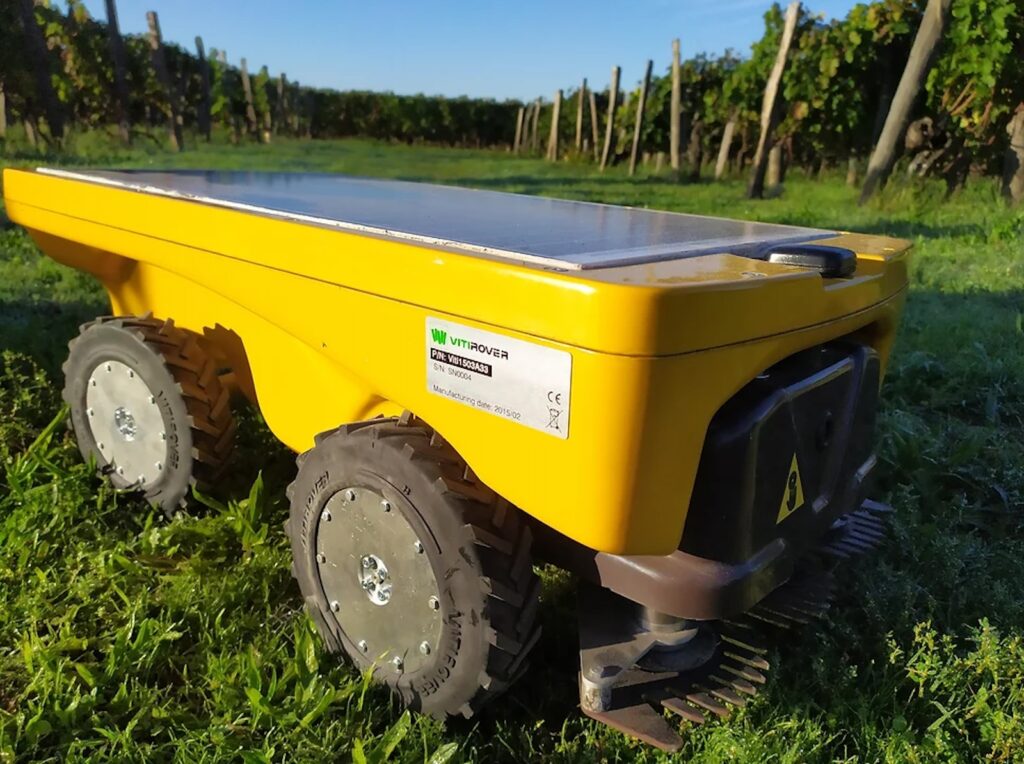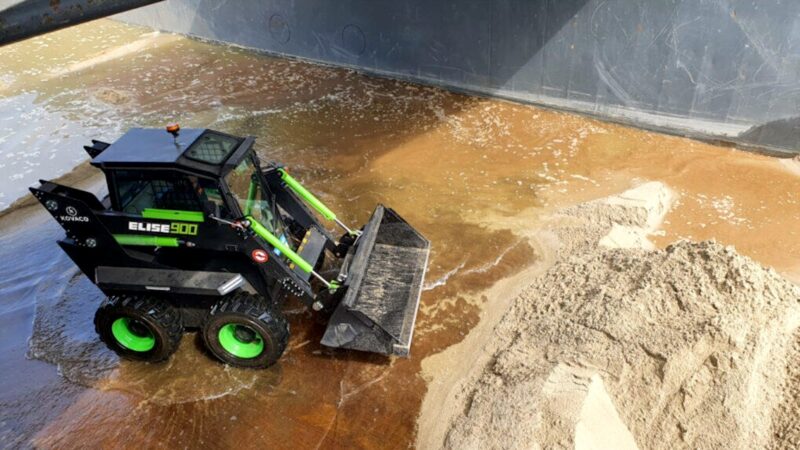Vad händer
Franska Vitirover har utvecklat terränggående trädgårdsrobot som agerar autonomt.
Kontext
Vitirovers robotar agerar självständigt, de har en GPS som de använder för att navigera och identifiera sin position. Robotarna laddar elektricitet automatiskt med solpaneler.

Dessa robotar klarar terräng med olika hinder, stolpar, träd, staket och växtlighet. De bibehåller vegetation under tio centimeter och kan klippa gräs mindre än tre centimeter från ett hinder.
The robot navigates itself autonomously and connected using an integrated GPS. It can be remotely controlled manually if required, thanks to a joystick function and cameras. It is designed to mow areas of up to one hectare (in around ten days) so that the grass does not exceed a height of 15 centimeters. The integrated solar panel provides six hours’ autonomy, and the battery, 16 hours. The robot can be recharged at a grid-connected charging station or connected directly to solar panels — at photovoltaic sites, for example.
PV Magazine: Live from Intersolar 2024: Vitirover begins mass production of autonomous robot mowers

Initially designed for vineyard maintenance, Vitirover’s robot found applications in orchards and then in industrial sites with high densities of sensitive obstacles, such as solar power plants and high-voltage transformers.
PV Magazine: Live from Intersolar 2024: Vitirover begins mass production of autonomous robot mowers
Vad har det för betydelse
Batterier som kombineras med solenergi resulterar i autonoma energiverktyg som klarar sig utan tillförsel av elektricitet. Med bättre programmering kommer dessa verktyg fungera mer och mer på egen hand, utan mänsklig assistans.





